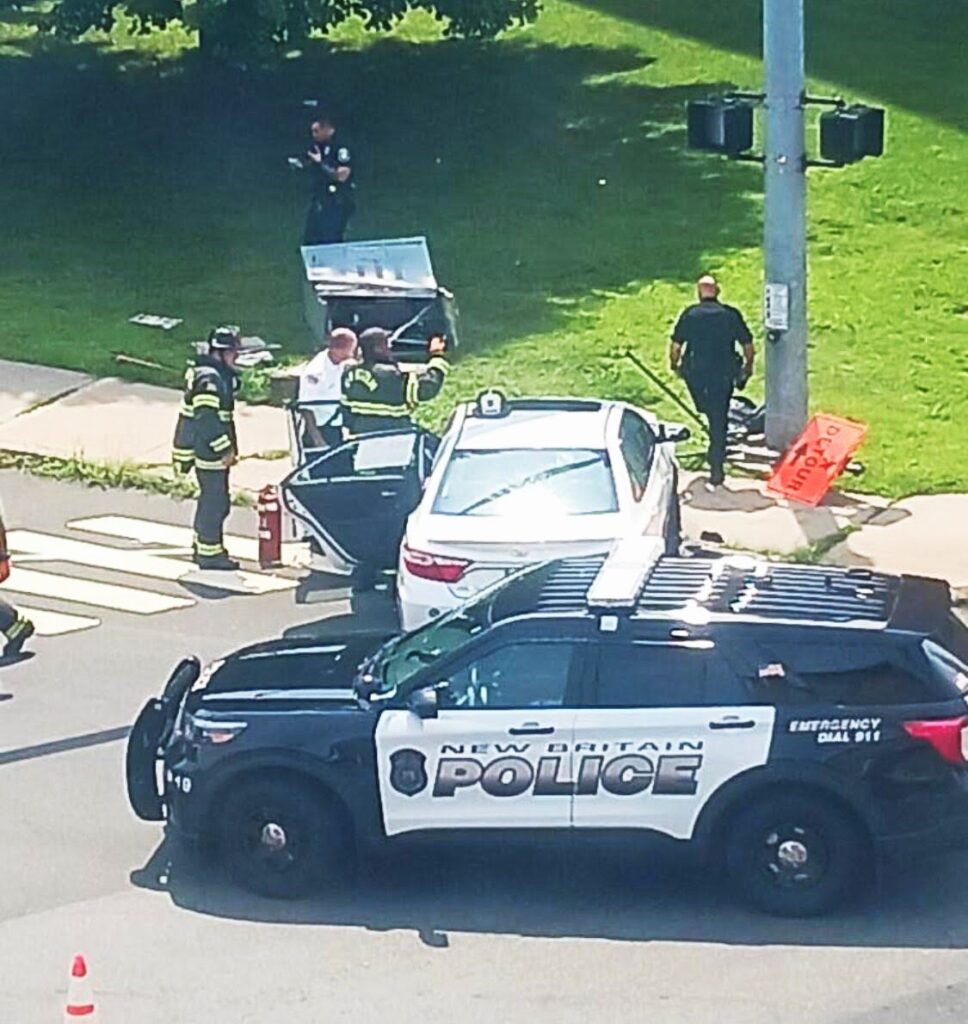Safety Plan Can Lead To Federal Implementation Grants
By John McNamara
NEW BRITAIN – The Common Council approved a resolution on December 11th setting long-range goals to “reduce fatal and serious injury crashes by 50% by 2035 and to reach ‘Vision Zero’ by 2045.”
A Vision Zero Task Force, announced by Mayor Stewart last May, convened in June and at its October 31st meeting set the goals for harm reduction on city streets
The Council resolution, introduced by Assistant Majority Leader Iris Sanchez (D-3), states federal transportation funds “are being used to develop a comprehensive Safety Action Plan to identify projects and strategies that will reduce fatalities and serious injuries at high crash locations in New Britain using a Safe Systems Approach that will address the safety of all road users including those who walk, bike, drive and ride transit.” New Britain’s Vision Zero efforts are underway in conjunction with the Capitol Region Council of Government’s (CRCOG) regional program that is using $2 million in federal funds from the Biden Administration’s Bipartisan Infrastructure Law that established the Safe Streets and Roads for All (SS4A) discretionary program with $5 billion in appropriated funds over five years between 2022 and 2026. Similarly, New Britain qualifies for $330,000 in federal funding to launch Vision Zero.
Common Council Update
The Council resolution stems from a requirement that a “Safety Action Plan” include a “Leadership Commitment and Goal Setting.” Implementation Grants can provide Federal funds to implement projects and strategies identified in an Action Plan to address a roadway safety problem. Eligible projects and strategies can be infrastructural, behavioral, and operational activities, according to the U.S. Department of Transportation’s Safe Streets and Roads For All program.
Planners and engineers from Cambridge Systematics are developing the Safety Action Plan with the 14-member Vision Zero Task Force. Over the next six months the project team will collect crash and injury data, identify trouble spots and causes and carry out community engagement activities for the public to weigh in on traffic calming and safety issues.
The consultant team will work with the city and the task force to “refine that list of high-priority intersections and segments” to produce ‘a final map and list of prioritized safety locations for the Safety Action Plan,” according to Cambridge Systematics. A final report will be sent to the Common Council in late spring of 2025 to share findings that will be the basis for improving roadway safety, driver behavior and enforcement on city streets. Based on the report the Council may consider a range of “traffic calming” strategies including but not limited to speed humps, additional speed radar displays, raised crossroads or intersections, additional signage and neighborhood-based safety awareness campaigns.

Vision Zero has been launched amid increasing concern for roadway safety during the current term of the Council. Over the last year alderpersons have filed dozens of petitions on speeding, pedestrian safety and enforcement that are sent to the police department for traffic monitoring and risk assessment.
Assistant Majority Leader Sanchez, for example, filed petitions to address pedestrian safety issues on Brook Street near New Britain High School and on South Main Street where a resident of the School Apartments was seriously injured by an auto . It has been an ongoing issue for Alderwoman Sanchez who filed her first petition for a traffic light at the location back in 2018. Similarly Alderwoman Wilma Barbosa (D-2) joined by Council President Francisco Santiago requested “speed humps or other speed reducing mechanisms” on the East Side over complaints that employees of a nearby company “drive aggressively in and out of the facility during the time school buses are picking up and dropping off children.”
Vision Zero activities and the possibility of federal support will allow the city to take a comprehensive approach to reducing traffic fatalities, injuries and crashes. Vision Zero as a public policy originated in Sweden in 1997. Its “core principle” is that “it can never be ethically acceptable that people are killed or seriously injured when moving within the road transport system.” It has spread to other countries including cities and towns in the United States. The federal Safe Streets grants program, part of the Infrastructure and Jobs Act adopted in 2021, is accelerating Vision Zero initiatives in the U.S.
The most recent data from the University of Connecticut’s Crash Data Repository shows there have been 17 fatalities involving 127 vehicles in New Britain over three years (October 2021-September 2024) and 90 persons with suspected serious injuries involving 141 vehicles in the city over the same period. For all crashes and collisions 5,230 were reported involving 9,607 vehicles between 2021 and 2024.
Mayor Stewart and five members of the Common Council serve on the Vision Zero Task Force including Sharon Beloin-Saavedra (R-1), Alden Russell (R-1), Nathan Simpson (D-1), Human Rights & Opportunities Officer Jerrell Hargraves (R-2) and Iris Sanchez (D-3). Other members include DPW Director Mark Moriarty, Brock Weber, Mayor’s Deputy Chief of Staff; Carl Gandza, Traffic Operations Manager; Lisa Kawecki, Athletic Director, Board of Education; Police Captain John Prisavage, Professional Standards; Police Sgt. Adam Capowski, Traffic Bureau; Mark Hoffman, Bike New Britain, and June O’Leary, Disabilities Service Advocate.
John McNamara is an alderman from Ward 4 and the Common Council Majority Leader. He has been sharing stories and writing about local government and the community on his nbpoliticus.com blog since 2006.




